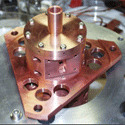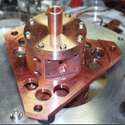Time doesn’t stand still
Time (or frequency) is the most precisely measured physical quantity by far. But finding ways to measure it even better could allow more powerful tests of fundamental physics, such as searches for changes in the fine-structure constant.
The world’s best time pieces are based on “atomic fountains,” in which lasers cool a cloud of alkali-metal atoms and then toss them gently upward. As the atoms fly up and then fall back down under the force of gravity, they pass twice along the axis of a cylindrical cavity filled with microwaves. By measuring how many atoms respond to the microwave field as they change the microwave frequency, researchers can adjust that frequency to within a few parts in of the value that defines the standard for a second.
Writing in Physical Review Letters, Jocelyne Guéna, of Systèmes de Référence Temps-Espace (SYRTE) at the Observatory of Paris, and her colleagues analyzed the imperfections that cause the largest, but nonetheless tiny, uncertainty in frequency. Using the clock at SYRTE, they verified experimentally how spatial variations in the microwave phase contribute to the error. The biggest contributions come from variations with a dipole or quadrupole dependence on angle in the horizontal plane. The collaboration between SYRTE and Pennsylvania State University predicts that independently feeding in the microwaves at four positions around the cylindrical cavity, instead of the current two, will reduce the clock errors from Doppler shifts to an unprecedented part in . – Don Monroe





